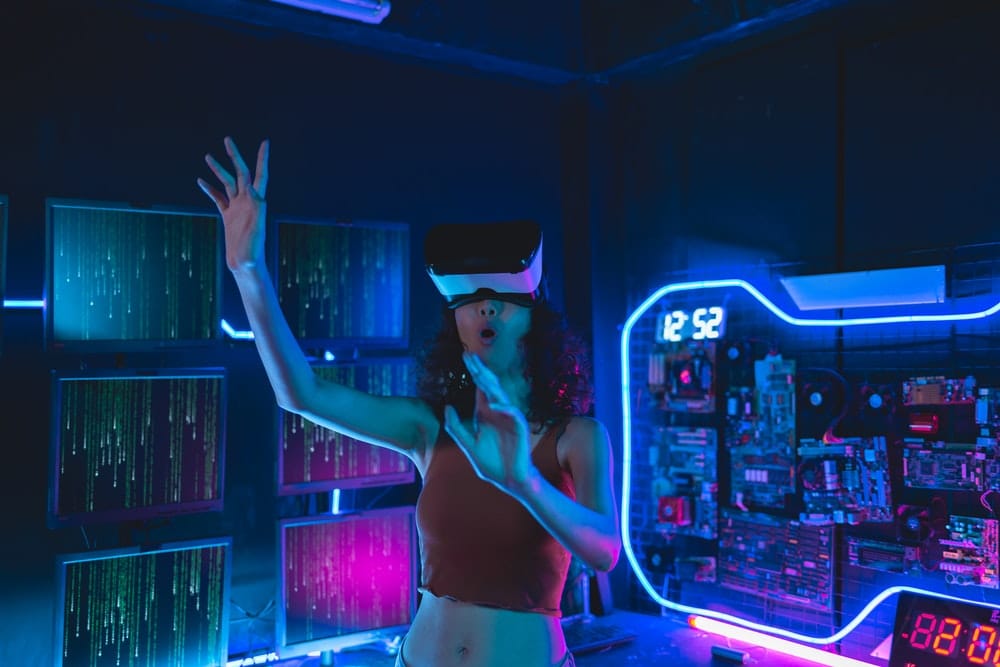As we navigate the innovative wave of the 21st century, virtual reality (VR) is progressively becoming a significant component of training practices across various sectors. The sports industry, particularly American football, is not lagging. Coaches and players are embracing this technology not just for the thrill it offers, but for the real-time data and practical benefits it presents.
This article explores how virtual reality can enhance decision-making for quarterbacks in the NFL through immersive training simulations. We will delve into the application of VR in football training, its benefits to athletes, and the role of data in making this virtual training a game-changer in the sports world.
Sujet a lire : Can Dynamic Stretching Routines Enhance Agility in Field Lacrosse Players?
Application of VR in Football Training
Incorporating VR into football training is no longer a futuristic concept; it’s a present-day reality. In the NFL, quarterbacks are among the player positions that significantly benefit from the advanced training offered by VR. The heightened virtual experience allows these key players to face virtual opponents, practice strategic movements, and make critical decisions in a simulated reality environment, offering a safer and more efficient training method.
Leading the charge in virtual sports training is EON Sports, a company specializing in creating immersive virtual reality sports training software. Their football simulator, SIDEKICK, has been adopted by various football coaches and players across the NFL and college football. The simulator offers quarterbacks a 360-degree immersive environment, making it possible to simulate real-life game scenarios.
Sujet a lire : What Are the Best Practices for Monitoring Heart Rate Variability in Elite Rowers?
Benefits to Athletes
The benefits that virtual reality offers to athletes, specifically quarterbacks, are immense. The innovative technology provides a player with a unique opportunity to practice, review plays, and sharpen their decision-making skills without the physical toll of traditional field training.
One key benefit of VR is that it allows quarterbacks to practice anytime and anywhere. All they need is a VR headset, and they can simulate thousands of game scenarios. This convenience enhances the players’ versatility and adaptability in dealing with real game situations.
Furthermore, VR training presents an infinite number of repetitions and combinations of plays, more than what a player could learn on the practice field. This exhaustive approach to practice helps quarterbacks make better, faster decisions in real games, enhancing their overall performance.
Role of Data in Virtual Training
Data plays a crucial role in making VR simulations effective for training. By monitoring and recording every move a player makes while using a virtual reality simulator, coaches can gather valuable data about the player’s performance, tendencies, strengths, and weaknesses. This data-driven approach to training fosters continuous improvement and personalized training regimes.
For example, in a virtual simulation, data can show which routes a quarterback prefers, how quickly they make decisions, and how accurately they throw under pressure. This information helps coaches understand their players better and tailor training to maximize the player’s capabilities.
VR as a Game Changer in the NFL
The NFL is a competitive landscape where every decision counts. For quarterbacks, every snap is an opportunity to make a game-changing play, and the pressure can be immense. However, VR has proven to be a game-changer, providing these athletes with a competitive edge.
Through VR, quarterbacks can simulate high-pressure game scenarios and practice making quick decisions. The ability to mimic these scenarios in a virtual environment provides an unmatched level of preparation. This experience significantly improves the players’ decision-making skills and confidence on the field.
Real vs. Virtual: Bridging the Gap
While VR can never fully replicate the gritty reality of a football field, it brings quarterbacks as close as possible to the real thing. The technology integrates the physical, cognitive, and emotional aspects of the game, providing a holistic training approach.
The ultimate goal of virtual reality training is to bridge the gap between the virtual and the real, enabling quarterbacks to transfer the skills and decision-making capabilities honed in the virtual environment to the real world. Based on the success seen so far, it’s clear that VR is not just a fascinating piece of technology; it’s a tool that’s reshaping training methods and enhancing performance in the NFL.
Advancements in Technology: The Rise of Virtual Reality in Sports Training
As we continue to ride the wave of technological advancements in the 21st century, virtual reality (VR) has emerged as an influential player, particularly in the arena of sports training. The domain of football training is no exception, with multiple teams and coaches harnessing VR’s potential.
Significant names in the industry, like EON Sports and STRIVR, have been instrumental in steering this wave. STRIVR’s immersive training system, for instance, has had a massive impact on the NFL, particularly in quarterback training. Started by Stanford University’s Virtual Human Interaction Lab director, Jeremy Bailenson, STRIVR works with teams like the Dallas Cowboys and the New England Patriots, providing quarterbacks with a unique training tool.
The advanced technology of a football simulator allows quarterbacks to practice making split-second decisions in a variety of game scenarios. They can choose the best pass routes, recognize defensive strategies, and anticipate opponent moves, all within a virtual, controlled environment. The convenience of VR allows for practice anytime, anywhere, making it an ideal supplement to traditional field training.
This advancements in technology deliver a diversified and practical approach to training, helping quarterbacks make quick, accurate, and efficient decisions when it matters most – in real, high-pressure situations.
Virtual Reality: The Future of Quarterback Training
The application of VR in sports training and, more specifically, in quarterback training, is becoming more of a reality with each passing day. Its potential in enhancing decision-making skills is considerable and continues to be harnessed by many in the sports industry.
Replicating real-life pressure situations, VR training gives quarterbacks an opportunity to practice and improve their split-second decision-making under different game scenarios. Companies like Sports VTS have capitalized on this, producing football simulators that provide realistic 360-degree environments for quarterbacks to train in.
Virtual reality is not just a flight simulator for pilots anymore. It is swiftly becoming a crucial component in training athletes, helping them hone their skills and improving their overall performance on the field. The combination of physical training with VR simulations offers a holistic preparatory regime for quarterbacks, allowing them to face high-pressure situations with confidence.
As we look ahead, it’s evident that VR has the potential to revolutionize how we approach quarterback training. By bridging the gap between virtual practice and real-life execution, VR is paving the way for a new era of sports training.
In Conclusion
With the continuous evolution of technology, the sports industry has seen significant transformations in training methodologies. The integration of virtual reality into quarterback training is a fascinating example. It not only elevates the training experience but offers immense practical benefits.
Virtual reality, much like a flight simulator for pilots, offers quarterbacks the opportunity to practice and improve their decision-making skills in simulated environments. By mimicking real-life game scenarios and high-pressure situations, players can prepare for the physical, cognitive, and emotional challenges of the game.
From leading companies like EON Sports and STRIVR to high school and college football teams, the adoption of VR in sports training is widespread and growing. As we move forward, VR will undoubtedly continue to play a significant role in reshaping training methods and enhancing performance in the NFL and beyond.






